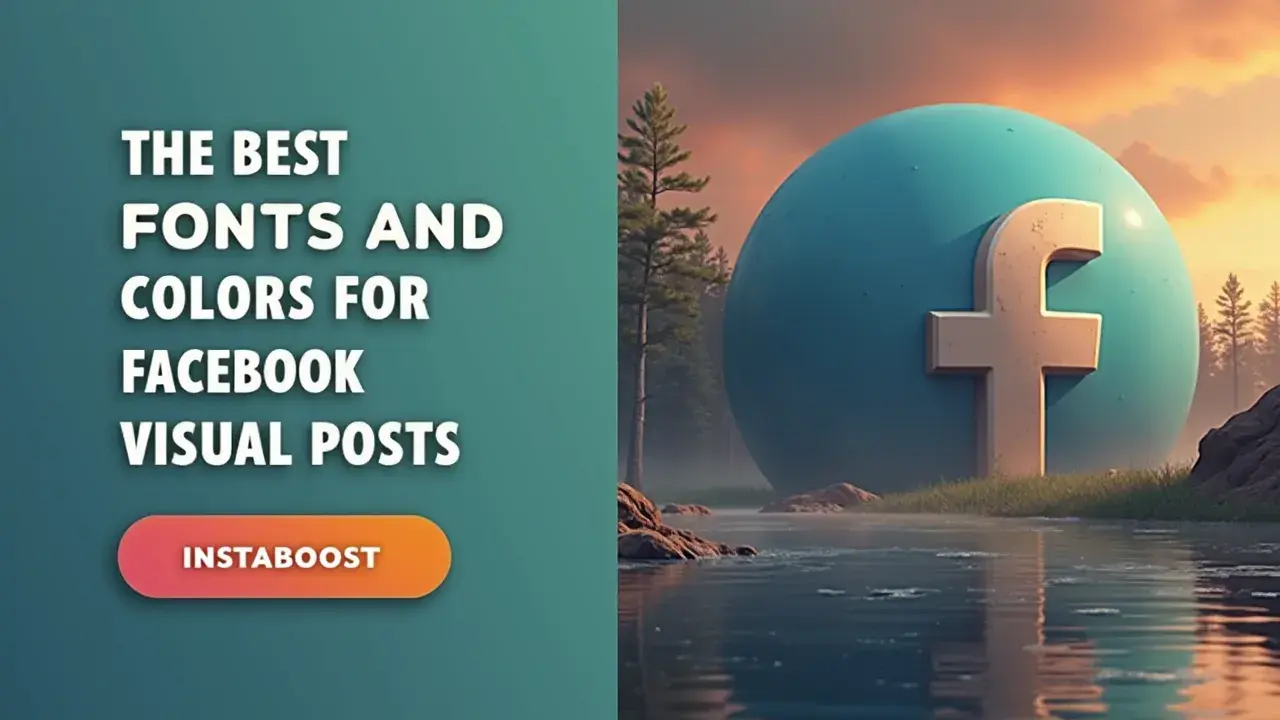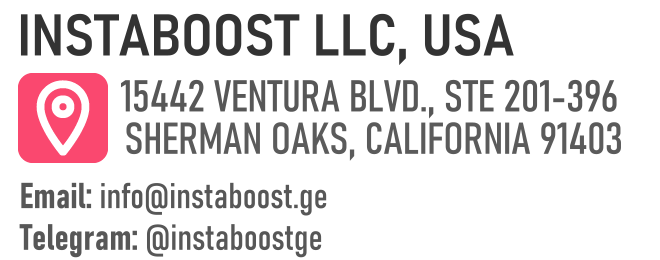What Are the Best Fonts and Colors for Facebook Visual Posts?
Clean, legible fonts paired with a balanced color palette improve scanning and recognition on Facebook visual posts. Strong contrast helps viewers process text quickly, while consistent styling builds recall across posts. Keep copy short, test a fresh palette during the first week, and watch for a modest uptick in reactions to validate the direction. A steady, focused approach can also support more shares, clicks, and trust over time.
Why Font and Color Choices Shape Facebook Engagement
Choosing fonts and colors for Facebook posts isn’t only about making things look nice – it’s a practical way to influence how people respond to what you share. With so many posts competing for attention, little design choices can make it easier for yours to be noticed. It goes beyond catching someone’s eye for a moment; if your text is easy to read and your colors feel inviting, people are more likely to pause and actually take in what you’re saying, rather than keep scrolling. The best fonts tend to be the ones you don’t have to squint at, but they still leave a bit of your own style in there, so it doesn’t feel generic or off-brand.
Color has its own quiet effect, too. A soft blue might make your message feel calm or trustworthy, while a brighter color could add energy or a sense of urgency. Those choices can steer whether someone feels like engaging – liking, sharing, or even leaving a comment. Sometimes, it’s the smallest tweaks that help you get noticed on Facebook fast, especially when your feed is crowded and attention is fleeting.
It's less about following every new design trend and more about understanding what makes something readable and approachable, especially when things are busy on Facebook. Learning which combinations make your posts easier or more pleasant to engage with can give you a small but real advantage, whether you’re posting for a business or sharing something personal. Getting familiar with these basics can help your posts feel more genuine and make it a little more likely that someone will stop and take a look, rather than scroll past without thinking.
It's less about following every new design trend and more about understanding what makes something readable and approachable, especially when things are busy on Facebook. Learning which combinations make your posts easier or more pleasant to engage with can give you a small but real advantage, whether you’re posting for a business or sharing something personal. Getting familiar with these basics can help your posts feel more genuine and make it a little more likely that someone will stop and take a look, rather than scroll past without thinking.

Why Credible Design Decisions Matter on Facebook
Noticing one more detail than someone else can make a difference. When it comes to picking fonts and colors for Facebook posts, it’s not only about what looks nice to you. There’s some research behind it. For example, the clarity of a font or the way a color feels can affect how people react to what you post. Sans-serif fonts, for instance, aren’t just there to look clean – they’re made to be easy to read on phones and computers, so people can take in your message without much effort. Color plays a role, too.
Blues and softer greens can make things feel more trustworthy or relaxed, while a bit of contrast can help your text stand out without making it hard to read. These choices aren’t random. Companies and social media teams actually test things like this to figure out what gets more clicks or makes someone pause a bit longer on a post. I remember reading that even subtle tweaks can secure more Facebook followers now simply by making posts a bit easier on the eyes. So, spending time to pick clear fonts and colors that work well together isn’t just about style – it changes how people see and engage with your post. In a feed full of noise, a small, thoughtful design tweak can help your message feel more considered, maybe a little more worth stopping for.
Mapping Your Message: Aligning Font and Color Choices With Purpose
It’s easy to get caught up in making a Facebook post look good, but after a while you realize design isn’t really the point if there’s no reason behind it. Every time you put together a visual – whether it’s a big announcement, a reminder, or something casual – it helps to be clear about what you want people to take away. The details you pick, like fonts and colors, end up shaping how someone might react. For example, using bold text and strong colors can help your post stand out in a busy feed, making it more likely people notice what you’re saying. On the other hand, something with softer colors and rounded letters can make it feel less pushy, which is nice if you’re hoping for conversation or a sense of community.
When you’re picking these things, it’s less about what looks trendy and more about what supports your message. Even just thinking about how people sometimes look for affordable Facebook likes to buy shows how much the details – both in design and interaction – matter for the overall impression. If your goal is to build trust or keep things clear, simpler fonts and colors – like blue or green – tend to work because people usually associate them with reliability.
But if you’re trying to signal urgency or energy, warmer colors like orange or red might help, as long as you don’t go overboard and make the post feel overwhelming. The main thing is to match what people see with what you actually want them to do, whether that’s clicking a link, leaving a comment, or sharing something with their friends. It’s not about decorating the post so much as giving it a direction, so it actually means something to someone who stops to look at it.
When Good Design Gets Lost: The Limits of “Best Practices” on Facebook
A lot of the time, posting on Facebook feels a bit pointless, like you’re putting effort into something that disappears before anyone notices. Everywhere you look, people give the same tips: pick sans-serif fonts for clarity, use colors that stand out, check your contrast for accessibility. It can start to feel like if you follow all these steps, then your post will automatically get seen.
But even if you do everything by the book, your post can slip by, especially when everything looks so similar. There’s no single trick that works for everyone, and sometimes outside factors – like the time you post, or the way your audience is feeling that day – matter more than the design details. I’ve even seen people try odd strategies, like boosting engagement or deciding to grow fast: buy Facebook views, just to see if it makes a difference. Connecting with people isn’t just about picking the right color or font. Sometimes you need to try something that doesn’t fit the usual guidelines, maybe a font that’s slightly offbeat or a color that wouldn’t normally go with your brand, but somehow matches the message you’re trying to get across. The important part is knowing when it makes sense to set the usual advice aside and do something that feels right for the situation. The standard rules are there for a reason, but they’re not a guarantee that your post will stand out or get noticed. They’re tools, not answers. Sometimes all you can do is trust your eye and see what happens.
Why Your Facebook Visuals Are Never Really Finished
When you put together a Facebook post, it helps to think of it less as a finished piece and more like the next step in a longer series. You can get caught up in picking a font or trying to match colors, but all of that is really just part of a process that keeps going. The details do matter – sometimes a clear, bold font pulls people in, or a certain color gets more attention – but the real work is in seeing how things change as you go.
People’s tastes shift, Facebook itself updates its look, and what seemed fresh a month ago can start to look tired. So, the best way to approach it is to treat each post as something you’ll probably adjust later. Pay attention to what people say in the comments or check Facebook Insights to see which posts actually get noticed. It’s interesting how sometimes, when you’re testing different approaches – like timing, design, or even how you buy reposts to grow on Facebook – the results can shift in unexpected ways. You might realize that a plainer font gets more clicks when there’s a sale, or that lighter backgrounds work better when you’re sharing a story. There isn’t a single right answer for design. It’s more about trying things, seeing what happens, and being willing to change course. The way people react, the trends, even the way colors feel – all of that keeps moving, and so do you, quietly updating your work in the background.
How Context Shapes the “Best” Fonts and Colors for Facebook
A lot of people talk about how picking the right fonts and colors will magically make your Facebook posts take off, like the algorithm is waiting for you to get it just right. But honestly, it’s not that simple. What works ends up depending on who’s seeing your posts, what you’re talking about, and even what’s happening that day. If you use a friendly, handwritten font for a café’s daily special, it might fit perfectly, but if you put the same font on a message about a water main break, it can feel off.
Bright colors that look great on your phone might come across totally different on someone else’s screen – sometimes even making your post harder to read. That’s why the lists of “best Facebook fonts” or “top color combinations” usually aren’t much help. People who figure out what really lands with their audience tend to notice which posts get comments, which ones get shared, and how small changes – a different shade of blue, a new font – change how people respond. Sometimes you even notice subtle shifts, like emoji reaction growth on Facebook, when you tweak your style or tone. It’s less about following some big rule and more about watching what happens, paying attention, making a few tweaks, and trying again. When you start treating fonts and colors as things you can play with and learn from, instead of choices you have to get perfectly right the first time, it’s easier to find what actually feels right for your page. And then you see those small signs that people are paying attention for real, even if you’re still sorting out which style works best.
What Real Testing Teaches About Facebook Fonts and Colors
It started with a test I nearly skipped. I’d made a small change to a Facebook post – swapped out the usual, safe font for something a bit livelier and switched the background from a muted blue to this bright coral. It didn’t seem important, honestly, and I kind of expected it wouldn’t matter.
But the next day, I saw the engagement numbers had tripled. That one simple result ended up changing how I think about design. I used to spend a lot of time reading up on “the best fonts for social media” and trying to follow advice I’d found online, but none of that prepares you for what actually works when real people see your stuff.
Sometimes, a font that looks classic and polished gets almost no response, but then something offbeat and a little odd suddenly clicks, especially on a post for a nonprofit. Colors aren’t predictable either – a color meant to be bold can get lost in someone’s feed, then a soft pastel stands out because it feels a bit different from the usual. The more I do this, the more I realize there aren’t hard rules that always work. Even the people obsessing over Facebook followers and likes can’t guarantee a formula. It’s more about trying things, watching what actually happens, and not getting stuck on your own preferences. Every time, the audience and the purpose and even the day of the week can change what does well. So now, I pay less attention to universal “best practices” and more to small experiments and what they show, even if it’s not what I expected to learn.
Building a Strategic Process for Font and Color Choices
When everything feels urgent, it’s tough to make clear decisions about what really matters. There’s often a pull to jump on every new Facebook trend – like someone on the team suggests changing the color scheme because of something they saw in a blog, or wants to update the fonts after noticing what’s popular elsewhere. It’s easy to fall into a pattern of chasing after new ideas, hoping for better results each time.
But if you do that, you rarely end up with visuals that add up to something meaningful over time. It helps to have a way to step back and check: what are these colors and fonts actually saying about what we do, and who are we trying to reach? Context is important. Before getting caught up in the next change, it’s worth taking time to figure out who your audience is and what you want your Facebook visuals to accomplish. Try making it a routine to look over which images and styles have actually worked – not just by looking at the numbers, but by noticing which posts really started conversations or made people stop and engage.
Sometimes, when you look for patterns in your choices – like which colors or fonts seem to fit the way your brand talks – it becomes clear what’s working. There’s a certain temptation, too, to focus on things that seem like shortcuts, such as deciding to buy followers for Facebook page, but even then, it’s the underlying consistency that shapes how people respond. You can use those patterns to set up a few basic guidelines for the team, so that it’s easier to make decisions, and people aren’t left guessing every time someone needs a graphic. This doesn’t have to mean every post looks identical, but it does help avoid unnecessary changes that don’t really move things forward. When you take time to base your visual decisions on what you’ve actually learned, each choice starts to fit in place a bit more naturally. You start to see how small tweaks add up – or don’t – and the next time a new idea comes up, you have something solid to look back on before you decide if it’s worth changing again.















